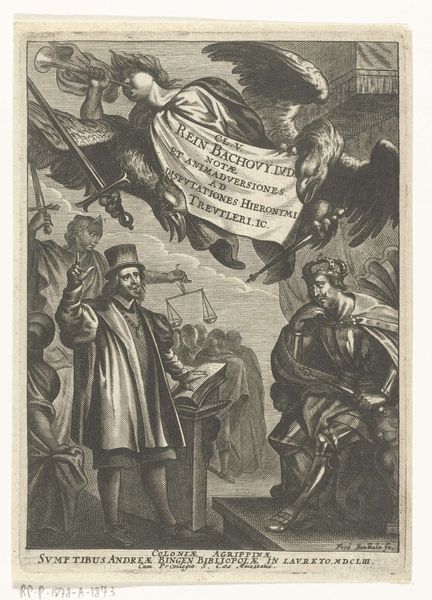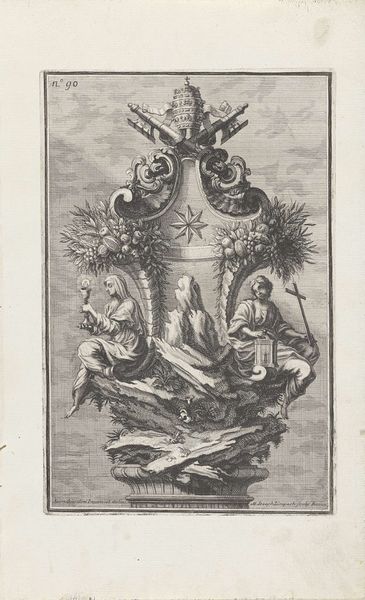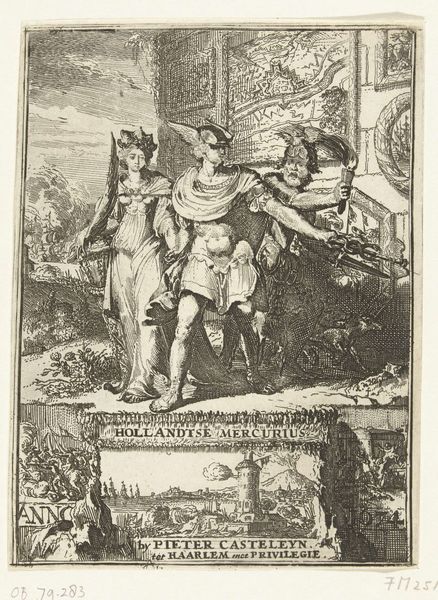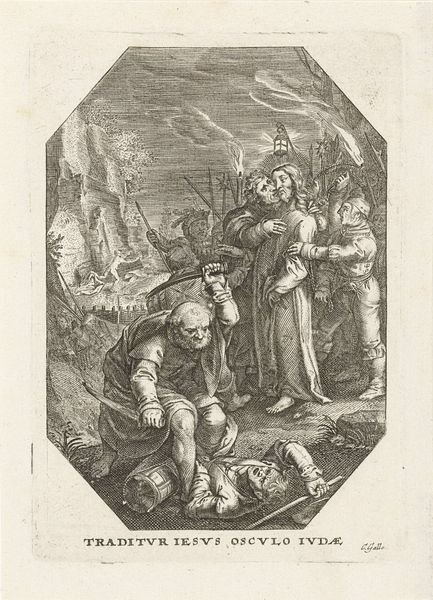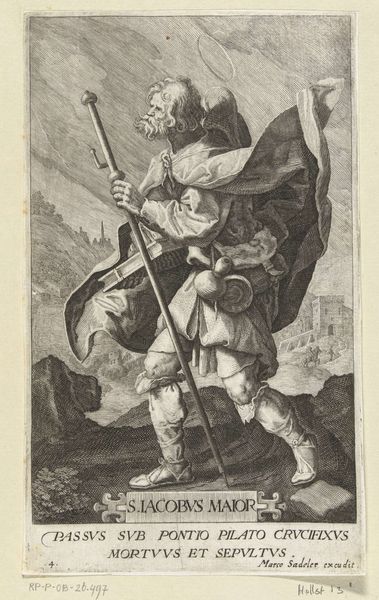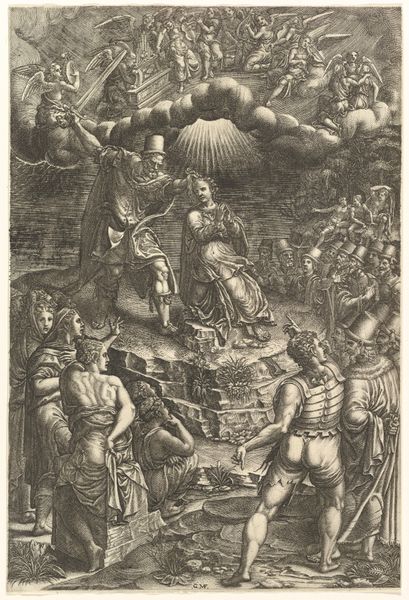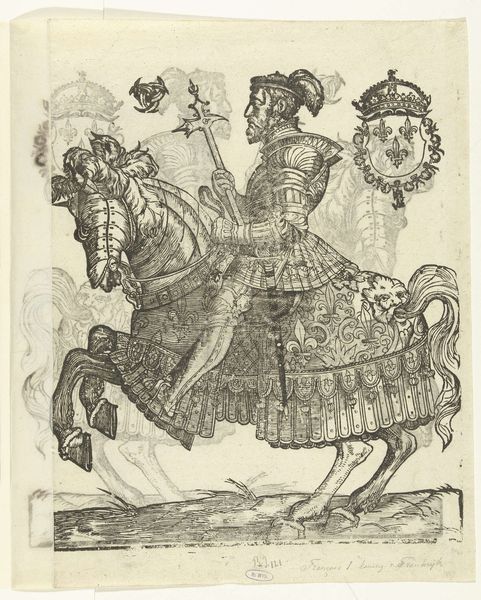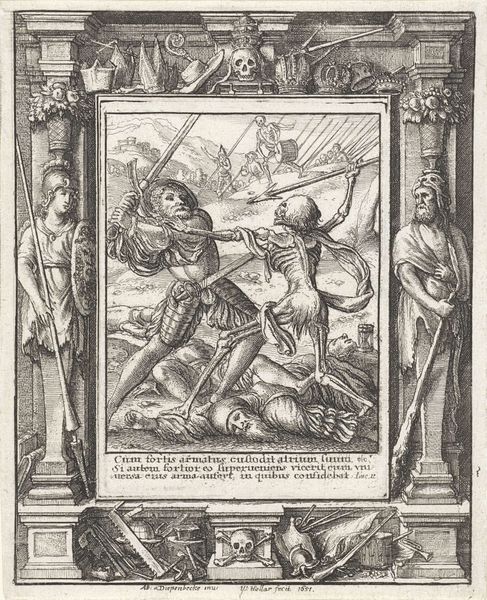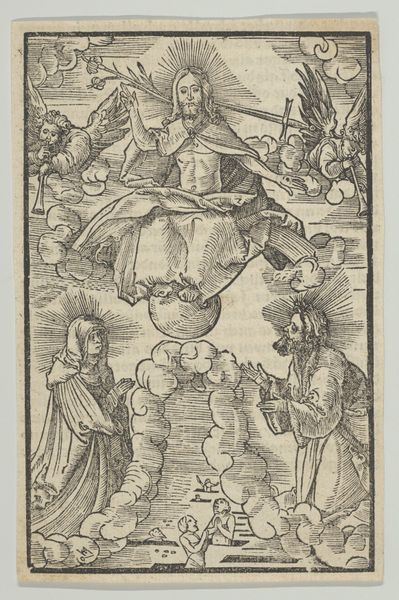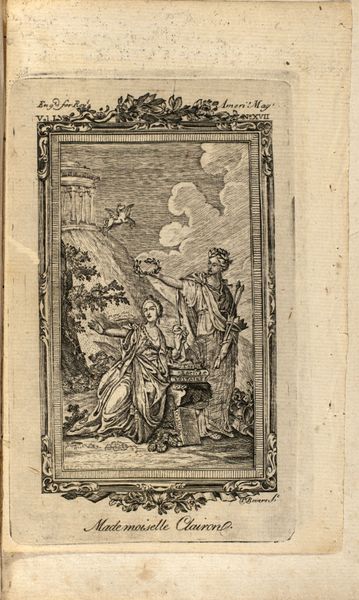
print, engraving
#
portrait
# print
#
old engraving style
#
islamic-art
#
genre-painting
#
engraving
Dimensions: height 167 mm, width 132 mm
Copyright: Rijks Museum: Open Domain
Editor: This print, "Portretten van Horusce en Hareaden Barbarossa, Barbarijse zeerovers" from between 1659 and 1713, attributed to Ignatius Lux, it’s really striking! The detail achieved through engraving is incredible. How would you interpret this piece? Curator: It's important to consider this print as a commodity itself. Prints like these circulated widely, shaping European perceptions of North African figures like the Barbarossa brothers. Consider the labor involved in its creation. The engraver, Lux, painstakingly transferred an image onto a metal plate. Was it based on direct observation, earlier sketches, or even secondhand descriptions? The distribution networks were key too – who was buying and consuming these images, and what biases did they reinforce about trade relations? Editor: So, you are suggesting that rather than just seeing a portrait of two men, we need to think about the economic and social forces that led to its production and distribution? Curator: Precisely! Look closely at the details – their clothing, weapons, and even their turbans. Are these accurate representations, or are they romanticized and designed for a European audience craving exotic imagery? How do these visual details play into larger power dynamics and trading economies of the period? How are ideas of ‘the other’ circulated in readily reproducible media such as engraving? Editor: I never considered how the materials themselves played a role in constructing these images. Curator: Consider the cost of the copper, the ink, the paper, and then consider that against how widespread this became! It forces you to re-evaluate who had access to even glimpse an image of people on the other side of a considerable trade network! It highlights both the access, but also what remains obscured by such ready access and transmission. Editor: I see. It's not just about *who* is depicted, but also *how* and *why* this particular image was created and disseminated in this particular way. Curator: Exactly. Material analysis provides a framework for asking pressing questions about power, representation, and consumption in a historical context. The image, its materiality, and dissemination speak as loudly as the people portrayed. Editor: I will certainly view this, and other pieces, through a new, more critical lens from now on. Thanks for the perspective!
Comments
No comments
Be the first to comment and join the conversation on the ultimate creative platform.
